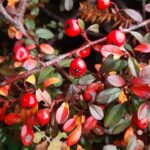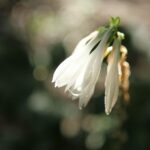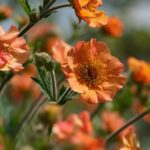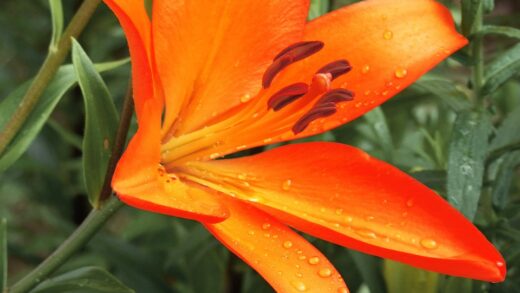Originating from China and belonging to the rose family, the almond bush, also known as the flowering almond, is one of the most beloved spring-flowering shrubs in domestic gardens. Its stunning, dense, pink flowers appear even before the leaves emerge, creating a true cloud of blossoms on the branches, a sight that makes every garden lover’s heart skip a beat. However, for the plant to shine in its most beautiful form year after year and remain healthy and vigorous, it is essential to understand and provide it with optimal living conditions, the most crucial of which is the right amount and quality of sunlight. Fulfilling its light requirement not only affects its aesthetic value, namely the number and size of the flowers, but also has a direct impact on the plant’s physiological processes, growth, and resistance to diseases.
The almond bush is a decidedly photophilic, or sun-loving, plant whose life cycle is closely tied to the number of sunny hours and the intensity of the light. Photosynthesis, the biochemical process by which the plant converts light energy into chemical energy, is the basis of subsistence for the almond bush as well. Using the chlorophyll in its leaves, it utilizes the sun’s energy to synthesize the carbohydrates necessary for growth and flowering from atmospheric carbon dioxide and water absorbed from the soil. In the absence of sufficient light, this process slows down, the plant cannot produce enough nutrients, leading to a weak, stunted shoot system and a general decline in vitality. Consequently, the plant becomes less able to defend itself against pathogens and pests.
The foundation for the spectacular spring floral display is laid during the previous summer, and sunlight plays a key role in this process. The differentiation of flower buds, meaning the formation of the next year’s flower primordia, takes place during the summer months, and for this process, the plant needs abundant energy, which it can only secure through intensive photosynthesis. If the almond bush is in a shady or partially shaded location where it does not receive the necessary daily amount of light, flower bud formation will be significantly reduced or may even fail to occur at all. The direct consequence of this is a sparse, unremarkable flowering the following spring, which means the loss of the plant’s main ornamental value.
Adequate light supply fundamentally determines not only the flowering but also the plant’s habit and structural composition. In full sun, the almond bush develops into a compact, densely branched, strong-limbed shrub or small tree that is stable and aesthetically pleasing. In contrast, specimens kept in the shade show typical symptoms of light deficiency: the shoots become elongated, thin, and stretch towards the light, the foliage becomes sparse, and the plant becomes prone to legginess. This loose, weak structure is not only less beautiful but also makes the plant more vulnerable to physical impacts, such as strong winds or the weight of winter snow. Abundant sunlight also promotes the ripening of the wood, which is a basic condition for successful overwintering.
Ideal placement and optimizing light conditions
When choosing the most ideal planting location for the almond bush, the most important factor is sun exposure. A part of the garden should be sought where the plant receives at least six, but optimally eight, hours of direct, unfiltered sunlight per day. Horticultural literature calls this “full sun,” and for the almond bush, this is an essential condition for abundant flowering and healthy development. South, southwest, or west-facing areas are particularly advantageous, where the sunlight is strongest during the midday hours, and the plant receives sufficient light energy in the afternoon as well. This criterion should not be treated with compromise, as a light-deficient environment leads to the slow but certain deterioration of the plant.
More articles on this topic
Partial shade, where the plant receives only four to six hours of direct sunlight daily, is already considered a compromise. Although the almond bush will likely survive in such conditions, its development and flowering will clearly lag behind its counterparts kept in full sun. The flowering will be noticeably sparser, the flowers may be smaller, and their color will not be as vibrant and rich. The density of the foliage will decrease, the color of the leaves may take on a paler green hue, and the entire plant will exhibit a less compact, looser structure. In such conditions, the plant becomes more susceptible to various diseases, especially fungal infections.
Deeply shaded locations that receive less than four hours of direct sun per day are completely unsuitable for growing the almond bush. A plant planted in such harsh conditions is subjected to real suffering, and its demise is almost guaranteed. We can expect no flowering at all, or only sporadically in the form of a few stunted flowers. The plant directs all its energy towards survival, searching for light, which results in the aforementioned etiolation, or abnormal elongation. The shoots become weak and thin, the leaves are sparsely arranged on them, and the plant quickly becomes leggy, losing all its ornamental value. Additionally, the dark, damp environment provides an ideal breeding ground for fungal diseases such as powdery mildew.
When selecting the right location, not only the cardinal directions but also the microclimatic conditions of the garden must be taken into account. Surrounding features such as buildings, high walls, or older, large-canopied trees can significantly affect light conditions. Planted in front of a south-facing wall, the plant can benefit from reflected heat and light, which is particularly favorable for it. In contrast, the canopy of a large deciduous tree, even if it is deciduous, can shade it for a significant part of the growing season, and the filtered light is not sufficient for it. Therefore, before planting, it is advisable to observe the chosen location at different times of the day to get an accurate picture of the extent and duration of sun exposure.
Symptoms of light deficiency and possible corrective actions
Recognizing the problems caused by light deficiency is crucial for saving the plant and improving its condition. The most conspicuous symptom is the previously mentioned etiolation, i.e., the abnormal elongation and thinning of shoots, while the distance between the leaves, the internodes, increases. The size of the leaves typically becomes smaller, and their color turns from a normal, vibrant green to a yellowish-green, pale shade. The most telling sign, however, is a drastic reduction or complete absence of flowering; the plant either does not produce flower buds, or the already developed buds do not open, or they fall off prematurely. The entire plant appears weak, sparse, and droopy.
More articles on this topic
It is important to be able to distinguish the symptoms of light deficiency from other problems that produce similar signs. Yellowing of the leaves, or chlorosis, can, for example, indicate a nutrient deficiency, especially an iron or magnesium deficiency, but can also be caused by overwatering or improper soil pH. To make a correct diagnosis, the situation must be examined complexly. The first step is always to assess the plant’s location and the amount of light it receives. If the almond bush is clearly in a shady spot, and the soil’s nutrient supply and water supply are adequate, light deficiency is almost certainly the primary cause of the problem.
If it becomes clear that the almond bush is suffering due to inadequate sun exposure, the most effective and targeted solution is to transplant the plant to a sunnier location. This procedure should be carried out during the plant’s dormant period, i.e., in late autumn after leaf fall, or in early spring before bud break, to minimize stress. During transplanting, care must be taken to lift the root ball out of the ground as intact as possible. In the new location, the soil should be thoroughly prepared, and after transplanting, regular, abundant watering should be provided so that the roots can regenerate as quickly as possible and establish themselves in their new place.
In the event that transplanting is not feasible for some reason, we have only limited options to improve the situation. One such possibility is to modify the environment, i.e., pruning the surrounding vegetation. By thinning the branches of trees or shrubs that shade the almond bush and raising their canopy, more light can reach our plant. We can also perform a stronger pruning on the almond bush itself, removing weak, elongated shoots, thereby encouraging a more compact form. However, it must be emphasized that these steps are merely symptomatic treatments and do not replace full sunlight, so the plant’s flowering and general condition will likely never reach that of its counterparts in a sunny location.
The relationship between light and plant protection
There is a close, inseparable relationship between adequate light supply and the health of a plant; abundant sunlight is the best natural “plant protection agent.” An almond bush grown in full sun photosynthesizes vigorously, accumulating ample energy reserves, which results in a strong, resistant tissue structure. These strengthened cell walls form a physical barrier against the penetration of pathogens, and the plant also has enough energy to activate biochemical defense mechanisms in the event of an infection or pest attack. In addition, direct sunlight and better air circulation quickly dry the morning dew or rainwater from the leaves, thus reducing the moist environment necessary for the establishment and proliferation of fungal diseases.
Almond bushes kept in shady, light-deficient conditions are particularly exposed to fungal diseases. One of the most common and destructive pathogens is monilinia blight (Monilinia laxa), which infects through the flowers, then causes the flowers to wilt, turn brown, and the branches to die back. Another common problem is powdery mildew, which forms a white, powdery coating on the leaves, inhibiting photosynthesis and weakening the plant. Both diseases prefer a humid, moist, poorly ventilated environment, which is typically characteristic of shady garden areas. The immune system of a plant weakened by light deficiency is unable to effectively combat these infections.
The appearance and damage of pests are also closely related to the plant’s condition and light conditions. Weakened, stressed plants are more attractive targets for various sucking pests, such as aphids or spider mites. The shoots of an almond bush grown in the shade are softer, their tissue structure is looser, so pests can more easily pierce them for feeding. While a healthy, sun-hardened plant can withstand a minor pest infestation without serious damage, a similar-sized attack can severely affect an already weakened specimen, even causing its death.
The foundation of Integrated Pest Management (IPM) is prevention, the most important element of which is providing optimal growing conditions for the plant. In the case of the almond bush, this means selecting a suitable, sun-rich growing site. If we fully satisfy its light requirements, we get a strong and vigorous plant whose natural resistance is at the highest possible level. This proactive, preventive approach significantly reduces the need for chemical plant protection products, such as fungicides and insecticides. Thus, we can not only enjoy a beautifully flowering, healthy almond bush but also contribute to the creation of a more sustainable and healthier garden ecosystem.


















